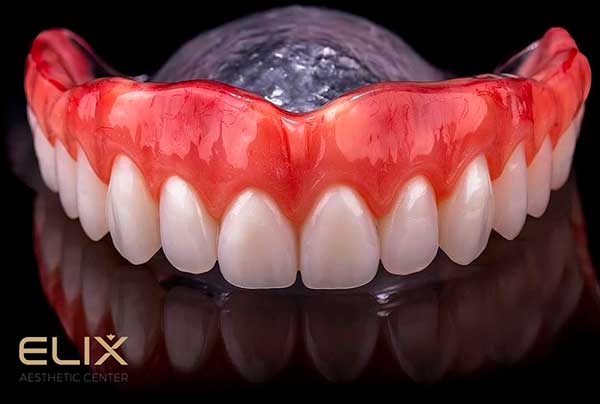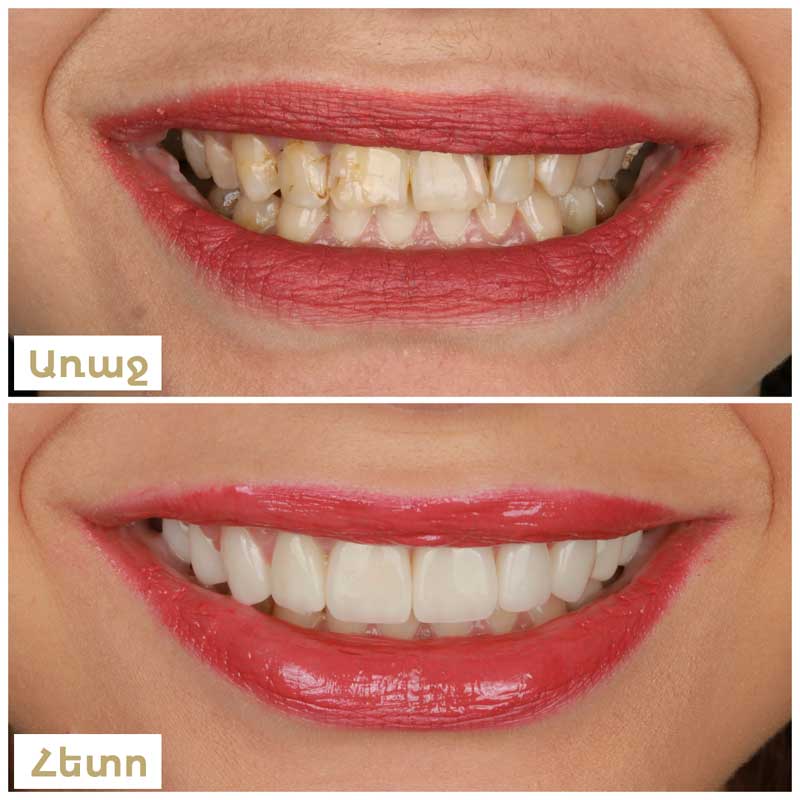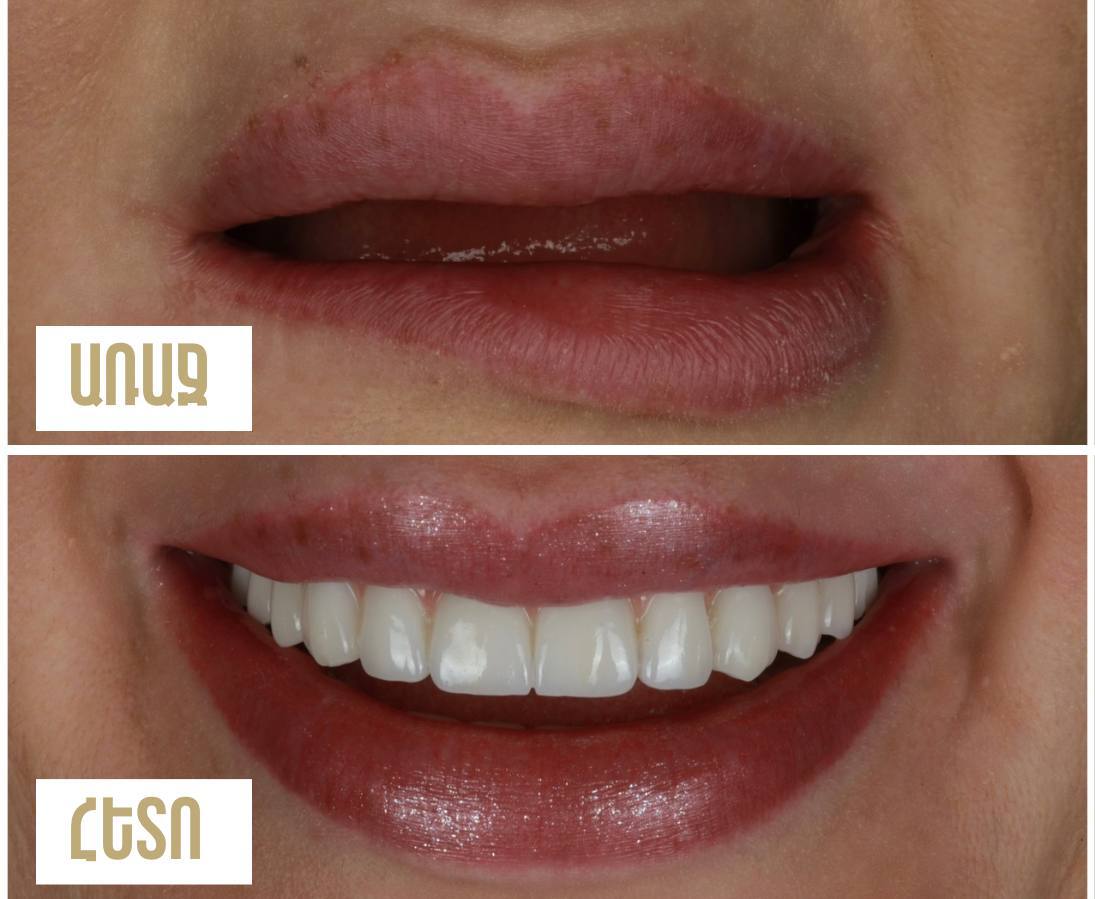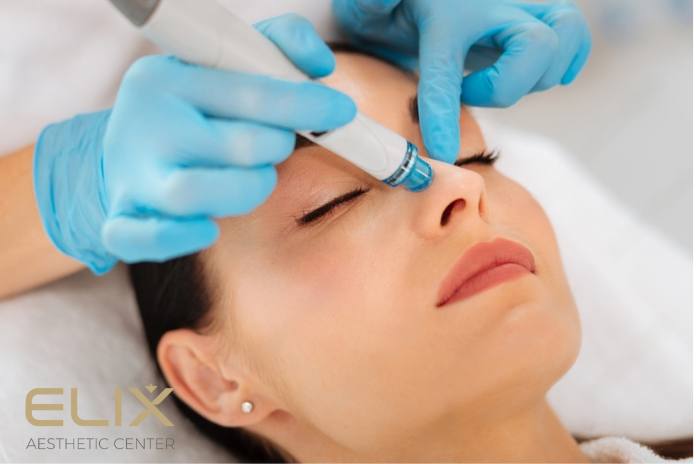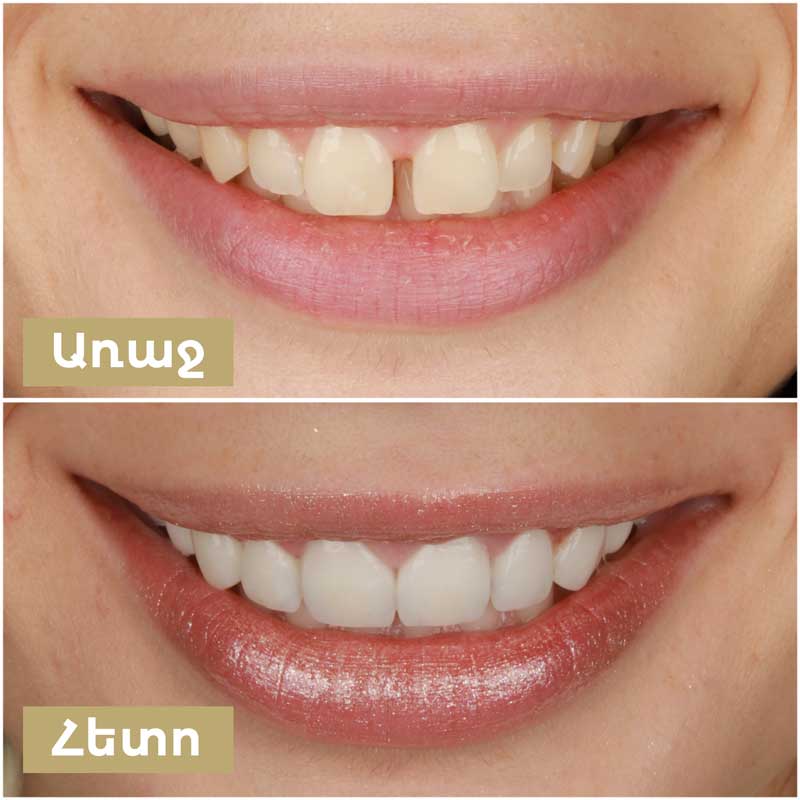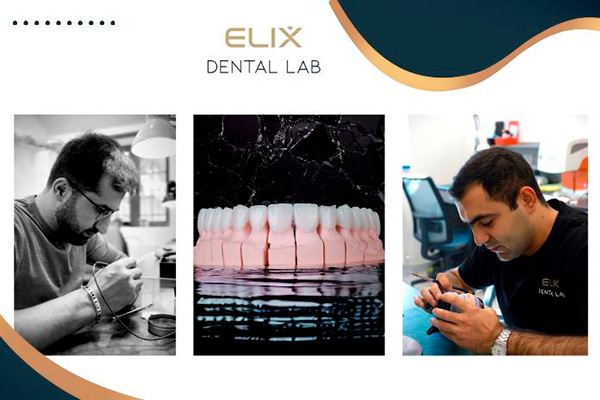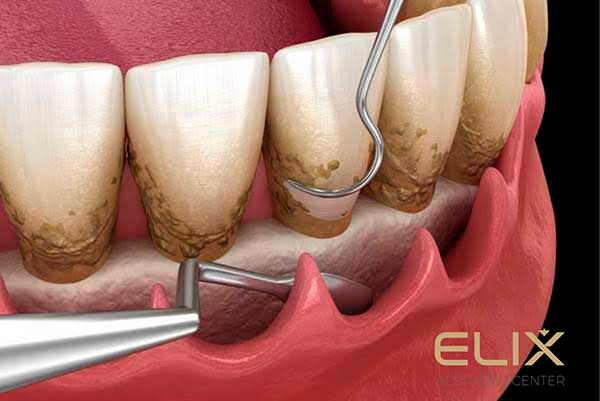
Periodontitis
Periodontitis is an inflammation of the gums, specifically the periodontium (the tissues surrounding the tooth), caused by the accumulation of bacterial deposits on the teeth and gums. The periodontium is a complex of tissues surrounding the tooth, including the alveolar bone, ligaments, gums, and root cement.
For the treatment of periodontitis, you can visit Elix Medical Center. We will perform therapy to eliminate bacteria, reduce periodontal pockets, treat periodontitis, and restore the function of the teeth.
Causes of Periodontitis
Periodontitis develops as a complication of gingivitis. The inflammation moves from the gums to the deeper tissues.
The causes of disease progression include:
- Increased number of microbes
- Change in the composition of bacteria, with pathogenic bacteria predominating
- Weakening of immunity
- Metabolic disturbances in the periodontium tissue against the backdrop of internal organ diseases
Classification and Stages of Periodontitis
Periodontitis can be acute or chronic. Acute periodontitis is rare and usually results from trauma or chemical damage. It is primarily a consequence of dental interventions, such as orthodontic treatment and the use of amalgam. In most cases, periodontitis is chronic, developing as a complication of gingivitis and as a result of microbial activity.
Based on the spread, periodontitis can be classified as:
- Localized – affecting only one site of inflammation.
- Generalized – affecting multiple sites of inflammation.
Degrees of Severity of Periodontitis:
- Mild: Loss of attachment between teeth and gums up to 4 mm
- Moderate: Up to 6 mm
- Severe: More than 6 mm
This classification is rather conditional, as periodontal damage can be mild on one tooth while severe on another.
Dentists usually encounter moderate or severe periodontitis, where bone loss is more than 50% of the tooth root length. This is because the early stages often present minimal symptoms, leading patients to overlook them or attempt self-treatment.
Symptoms of Periodontitis
The initial signs of the disease are similar to those of gingivitis. Patients experience gum bleeding, which may be accompanied by swelling, redness, and mild pain. In the morning, saliva may appear thick and sticky.
As the disease progresses, more severe symptoms appear, prompting patients to seek medical attention:
- Separation of upper incisors, leading to a noticeable aesthetic issue
- Tooth mobility
- Severe pain while chewing
- Gum recession, exposing the tooth root
- Persistent bad breath
Patients may seek medical attention during a periodontitis flare-up. These exacerbations are severe, characterized by sharp, stabbing tooth pain, fever, and purulent inflammation. Many patients also experience general symptoms such as elevated body temperature and weakness.
Periodontitis Diagnosis
The primary basis for diagnosing periodontitis is a dental examination. The main indicator of periodontitis is the presence of periodontal pockets up to 6 mm deep. Due to the loss of bone tissue, teeth become mobile. At the same time, pathological changes in the gums are observed, such as hyperplasia (overgrowth) or ulceration.
When pressing on the pocket's base, inflammatory exudate may be released. Secondary tooth displacement can also occur due to their mobility.
In cases of acute periodontitis, the dentist observes bright red gums, increased tooth mobility, and purulent discharge from the periodontal pocket.
Main diagnostic methods for periodontitis:
- Examination
- Probing of periodontal pockets
- Radiography to assess the condition of the bone tissue.
Additional tests based on indications:
- Computed tomography for detailed visualization of the ligament apparatus
- Reoparodontography and ultrasound Doppler flowmetry to assess the blood supply to the periodontium
- Densitometry to determine bone density.
Complications of periodontitis:
If the patient does not consult a doctor or receives inadequate treatment, periodontitis can lead to acute or chronic complications. The most common complications include:
- Periodontal abscess – formation of a pus cavity near the tooth root
- Root perforation or fracture
- Coronal perforation (hole)
- Perforation of the cavity floor
The more severe the complications, the more treatment procedures are required, the longer the treatment lasts, and the lower the chances of preserving the natural tooth. Consult a dentist at the first signs of the disease to treat it before complications develop.
For more detailed information about the treatment of periodontitis, read here…

